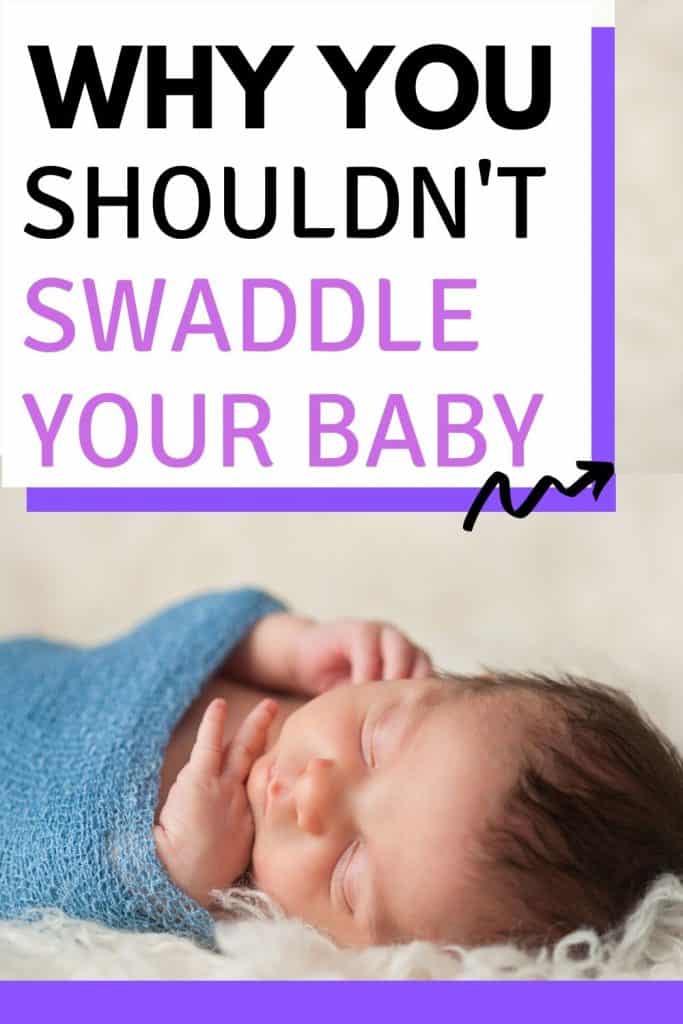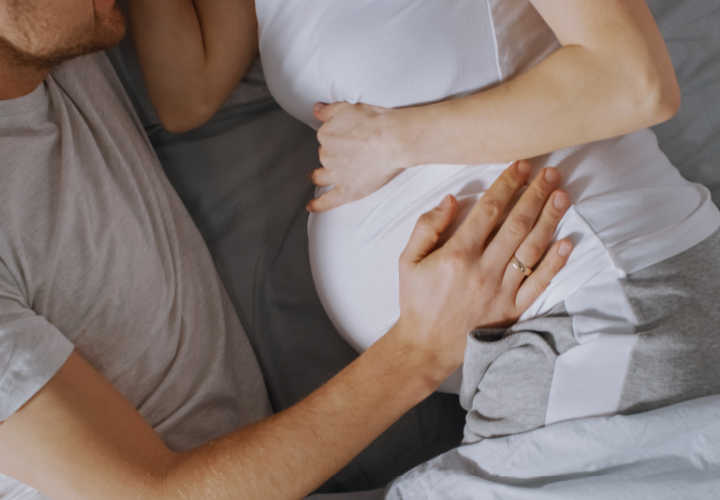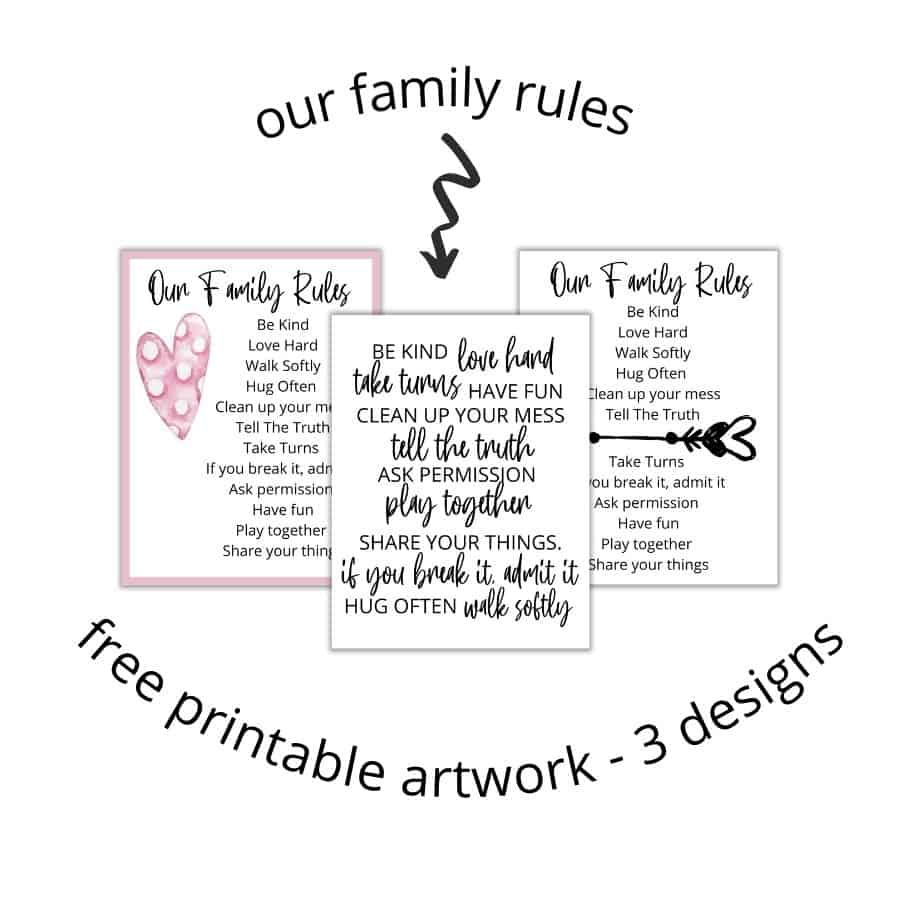Is Swaddling Dangerous For Babies?
Is Swaddling dangerous? Like me, you might not have considered whether you could be putting your baby at risk by using a swaddle and helping them to feel safe and secure.
Mothers and nurses have used swaddling for thousands of years as a means to help newborns sleep better but the truth is, swaddling the old fashioned way does have its risks according to the latest research. Read on to find out how to reduce these risks and keep your baby safe.

This page contains affiliate links meaning I earn a commission if you use those links. Please read my Disclosure for more details.
Why do we swaddle babies?
The swaddle stops the Morro reflex that causes babies’ arms to flail and makes them feel snug and secure. Without a swaddle to hold their little arms in place, they wake up more frequently or often only want to sleep on your chest or in your arms.
Obviously, no new mom wants to have less sleep so swaddling is often a go-to for the first few weeks. In fact, nurses routinely swaddle newborns as soon as they are born in the hospital.
RELATED: 31 Clever Colic Remedies To Stop The Crying
Is Swaddling Dangerous?
According to the latest research recommendations from the AAP, there are really 2 things to consider when it comes to using a swaddle safely and the risk factors can be greatly reduced or eliminated by using safe swaddling techniques.
1.Does Swaddling increase the risk of SIDs?
According to the American Academy of Pediatrics, swaddling is only a risk factor for SIDs if the baby is swaddled too tightly or could roll onto their tummy or side. In this situation, the risk is that the baby could suffocate as they might not have the neck strength to lift their head up.
From Rachel Moon of the AAP: “It is fine to swaddle your baby. However, make sure that the baby is always on his or her back when swaddled. The swaddle should not be too tight or make it hard for the baby to breathe or move his or her hips. When your baby looks like he or she is trying to roll over, you should stop swaddling.”
They go on to recommend that swaddles are given up by 2 months of age. An alternative at that age is the Merlin Magic Sleepsuit which keeps babies feeling safe and snug without swaddling.
2.Does swaddling cause hip dysplasia?
During my first daughter’s six month check up, the pediatrician noticed a clicking sound on one of her hips. She also saw asymmetric folds at the top of her legs which are a sign of possible hip dysplasia.
Before that appointment, we had had no warning signs at all and no family history of hip issues. In fact, my daughter was an early crawler at 5.5 months.
The doctor referred us to the Children’s hospital “as a precaution” but didn’t give me much more information.
Although it is not life-threatening and completely treatable, hip dysplasia is extremely tough on babies and their parents. Children need to be in a full body cast for months and may require special car seats, high chairs and strollers.
READ NOW:Where to get over $1000 of free baby stuff
We were lucky and my daughter was spared the cast. We were instructed to stop using all “containment” devices such as the Jolly Jumper and exersaucer.
The doctor recommended that we keep her legs and hips in a “froggy” position as much as possible, preferably using a baby carrier like the Ergobaby 360 carrier.
A year and a half later, finally discharged from the care of the hospital, I was pregnant with baby #2. We had been lucky, my daughter’s mild case of dysplasia self-corrected as she grew. We also made sure to keep her hips in a froggy position as much as possible and stopped using containment devices.
At the final appointment, 6 months pregnant, I asked what we should do with the newborn to avoid hip dysplasia. The number one thing the doctor said was to make sure to use hip healthy swaddling techniques. Why?
What the International Hip Dysplasia Institute says:
The most unhealthy position for the hips during infancy is when the legs are held in extension with the hips and knees straight and the legs brought together, which is the opposite of the fetal position. The risk to the hips is greater when this unhealthy position is maintained for a long time.
Swaddling infants with the hips and knees in an extended position increases the risk of hip dysplasia and dislocation. It is the recommendation of the International Hip Dysplasia Institute that infant hips should be positioned in slight flexion and abduction during swaddling. The knees should also be maintained in slight flexion. Additional free movement in the direction of hip flexion and abduction may have some benefit. Avoidance of forced or sustained passive hip extension and adduction in the first few months of life is essential for proper hip development.
So how can I keep my baby’s hips safe?
Essentially, you should avoid anything that does not let the baby’s legs flex into a frog-like position and make sure they are not “dangling” by the crotch in carriers (especially forward facing ones), exersaucers and jumpers.
When it comes to swaddling, despite what the nurses tell you, you should not be wrapping the baby’s legs together straight down so that they can not bend upwards and outwards.
The healthiest position is for the hips to fall apart to the side, with the thighs supported and the hips and knees bent, the opposite of the swaddle position.
RELATED: 6 Newborn Essentials To Make Mom’s Life Easier
Safe Swaddling Techniques
If you are anything like me, you can’t imagine not wrapping your newborn up tightly for sleep but there are alternatives.
The Morro reflex really only affects the arms so keeping them swaddled will still comfort a newborn even while the legs are free to move.
Hip Healthy Swaddle Recommendations
The best swaddle I found for this is the HALO SleepSack Swaddle. It is a hybrid sleepsack with a swaddle part for the arms only. It’s so easy to use and is recognized as “Hip Healthy” by the International Hip Dysplasia Institute.

Another option is the Woombie Convertible which mimics the fetal position of babies in the womb while keeping their hips free to move. The nice thing about this swaddle is that you can also switch it to an arms -out position.

Safe Swaddling Techniques
The video below will show you the best way to swaddle a baby safely using a regular swaddle blanket like these ones. (I like these because they are breathable so they reduce any SIDS risk too).
More baby tips:
The Minimalist To The Baby Stuff You Need
12 Places to Get Baby Freebies For Canadians
The 5 Newborn Essentials I Could Not Live Without
The Postpartum Mom Survival Kit






